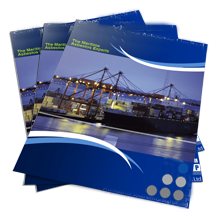Asbestos Removal
Before its dangers became universally acknowledged, asbestos was a valuable commodity in the shipbuilding world of the 20th century. Resistant to corrosion and heat, it seemed an ideal material to overcome many shipboard dangers. However, asbestos is now known to cause many forms of illness. Chief among them is the rare asbestos cancer mesothelioma (Including the most common form of this deadly disease, pleural mesothelioma), in addition to lung cancer, asbestosis, and many other lung ailments.
Over 300 asbestos-containing materials were commonly used on ships until the 1970, many of these materials still remain in place on ships in the 21st Century.
Some asbestos-containing material (ACM) is still allowed during new ship construction if no good alternative exists.
The most common use of asbestos onboard has been for insulation. Asbestos could be found in pipe covering which insulated hot steam pipes, hot water lines and fuel lines. The sprayed-on form of asbestos insulation became highly friable over time. Preformed pipe insulation was a safer form but still contained asbestos that could be damaged by extreme conditions. Regardless of its form, pipe insulation was frequently cut off and replaced, exposing workers and anyone in the area to asbestos dust.
It is estimated that a ship of aircraft carrier size built prior to asbestos reforms could reasonably contain 500 to 1,000 tons of asbestos and asbestos-containing material.
Personnel exposed to asbestos during the course of their work included shipfitters, machinists, pipe fitters, pipe coverers, boiler makers, electricians, welders, riggers and engineers. In addition, onboard a ship that contains friable asbestos materials, nobody is immune from asbestos dust exposure. Close quarters and poor ventilation increase asbestos hazards, and these conditions virtually define ship life.
The International Convention for the Safety of Life at Sea (SOLAS) introduced amendments in December 2000 prohibiting new installation of asbestos-containing materials on all ships. There are three exceptions: vanes used in rotary vane compressors and rotary vane vacuum pumps, watertight joints and linings used for fluid circulation under certain high-temperature or high-pressure circumstances, and flexible thermal insulation assemblies used for temperatures over 1,000 degrees.
Currently, very few asbestos-containing materials are used in the production of new ships. The principal concern is now with the removal of materials as they become friable over time.


